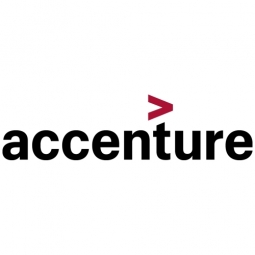下载PDF
Airbus Soars with Wearable Technology

技术
- 可穿戴设备 - 增强现实(AR)眼镜/耳机/控制器
适用行业
- 航天
适用功能
- 离散制造
用例
- 过程控制与优化
挑战
建造空中客车飞机涉及复杂的制造过程,其中包含数千个活动部件。速度和准确性对于业务和竞争优势至关重要。两者的改进将对空客的利润产生重大影响。空中客车公司希望帮助运营商降低组装机舱座椅的复杂性并减少完成这项任务所需的时间。
客户
空客
关于客户
空中客车集团是航空、航天和国防相关服务的全球先驱,创造尖端技术。
解决方案
事实证明,可穿戴技术是制造环境的相关解决方案,可以即时访问关键信息,从而提高生产力和操作员满意度,同时降低培训要求。使用上下文标记指令,智能眼镜显示操作员所需的所有信息,以帮助更快地标记地板并将错误减少到零。此外,埃森哲实施的眼镜技术还通过授予对条形码扫描、云端数据检索、语音命令和增强现实等功能的访问权限来提供交互性。使用这项创新技术,所有飞机的座位位置都可以标记到最后一毫米,并检查准确性和质量。
收集的数据
Accuracy, Man Hours, Operator Compliance, Process Procedure, Production Efficiency
运营影响
数量效益
相关案例.

Case Study
Aircraft Predictive Maintenance and Workflow Optimization
First, aircraft manufacturer have trouble monitoring the health of aircraft systems with health prognostics and deliver predictive maintenance insights. Second, aircraft manufacturer wants a solution that can provide an in-context advisory and align job assignments to match technician experience and expertise.

Case Study
Aerospace & Defense Case Study Airbus
For the development of its new wide-body aircraft, Airbus needed to ensure quality and consistency across all internal and external stakeholders. Airbus had many challenges including a very aggressive development schedule and the need to ramp up production quickly to satisfy their delivery commitments. The lack of communication extended design time and introduced errors that drove up costs.

Case Study
Developing Smart Tools for the Airbus Factory
Manufacturing and assembly of aircraft, which involves tens of thousands of steps that must be followed by the operators, and a single mistake in the process could cost hundreds of thousands of dollars to fix, makes the room for error very small.

Case Study
Accelerate Production for Spirit AeroSystems
The manufacture and assembly of massive fuselage assemblies and other large structures generates a river of data. In fact, the bill of materials for a single fuselage alone can be millions of rows of data. In-house production processes and testing, as well as other manufacturers and customers created data flows that overwhelmed previous processes and information systems. Spirit’s customer base had grown substantially since their 2005 divestiture from Boeing, resulting in a $41 billion backlog of orders to fill. To address this backlog, meet increased customer demands and minimize additional capital investment, the company needed a way to improve throughput in the existing operational footprint. Spirit had a requirement from customers to increase fuselage production by 30%. To accomplish this goal, Spirit needed real-time information on its value chain and workflow. However, the two terabytes of data being pulled from their SAP ECC was unmanageable and overloaded their business warehouse. It had become time-consuming and difficult to pull aggregate data, disaggregate it for the needed information and then reassemble to create a report. During the 6-8 hours it took to build a report, another work shift (they run three per day) would have already taken place, thus the report content was out-of-date before it was ever delivered. As a result, supervisors often had to rely on manual efforts to provide charts, reports and analysis.

Case Study
SAP Leonardo Enabling Rocket Science
At times, ULA has as many as 15 different operating systems dedicated to overlapping processes, such as rocket design, testing, and launch. Multiple systems created unnecessary costs and unwanted confusion among workers at offices, factories, and launch sites in different location. In order to improve collaboration and transparency during vital activities that directly influence mission success, ULA wanted to improve data sharing and streamline manufacturing processes.






